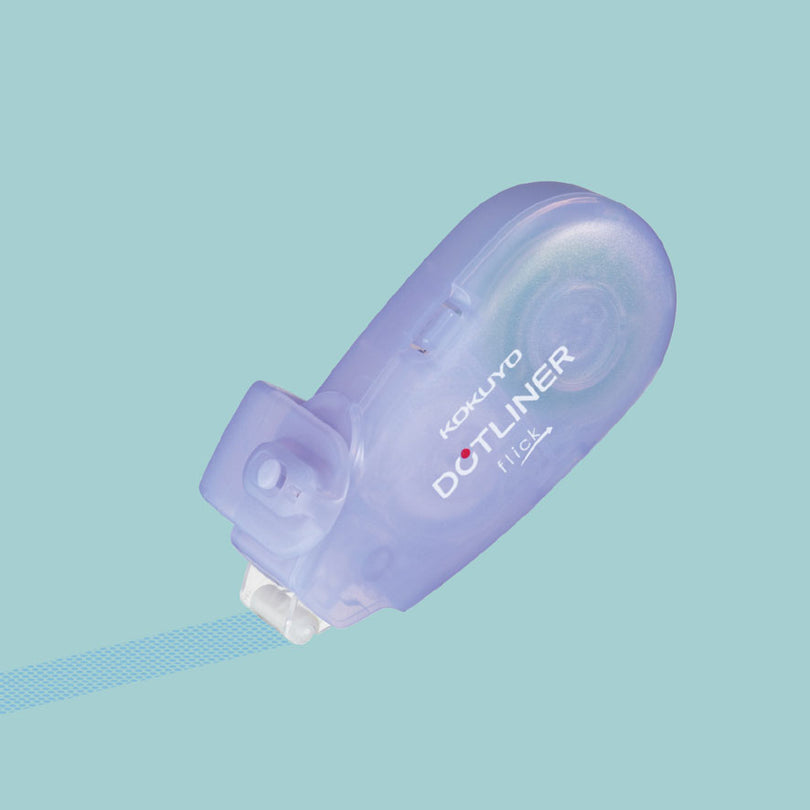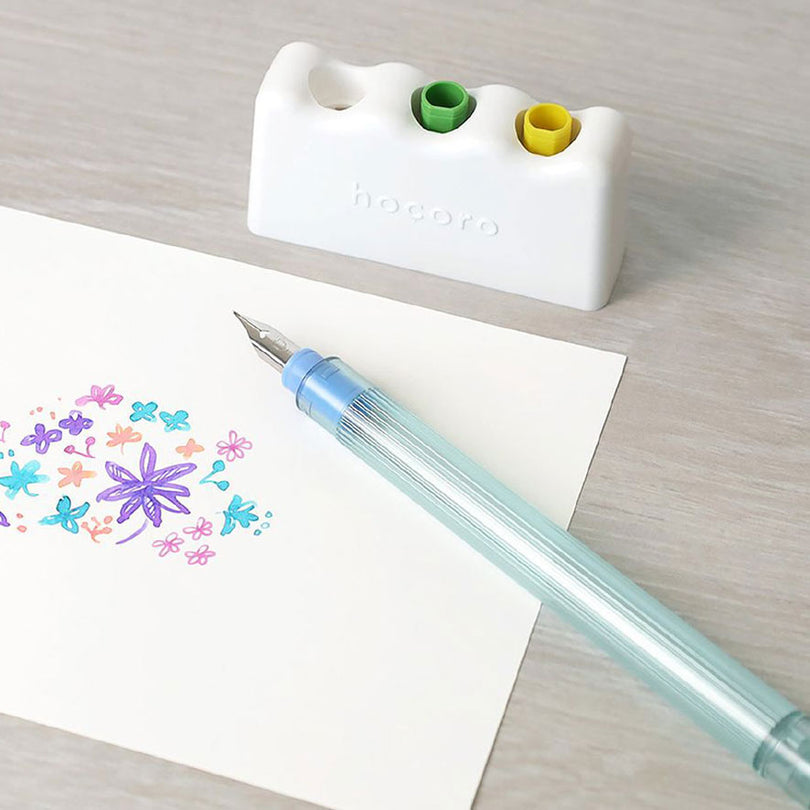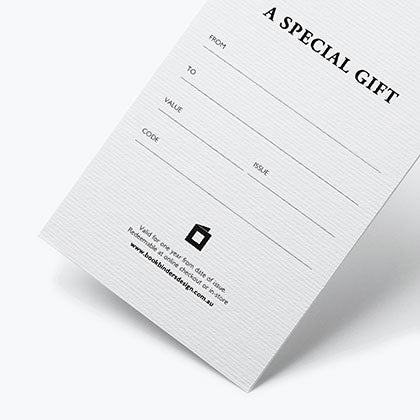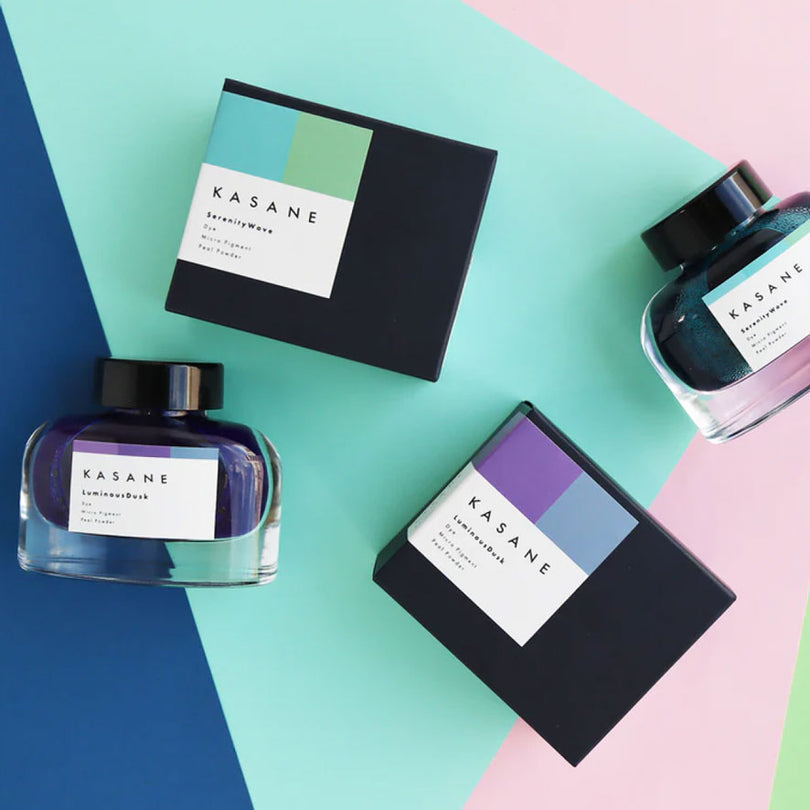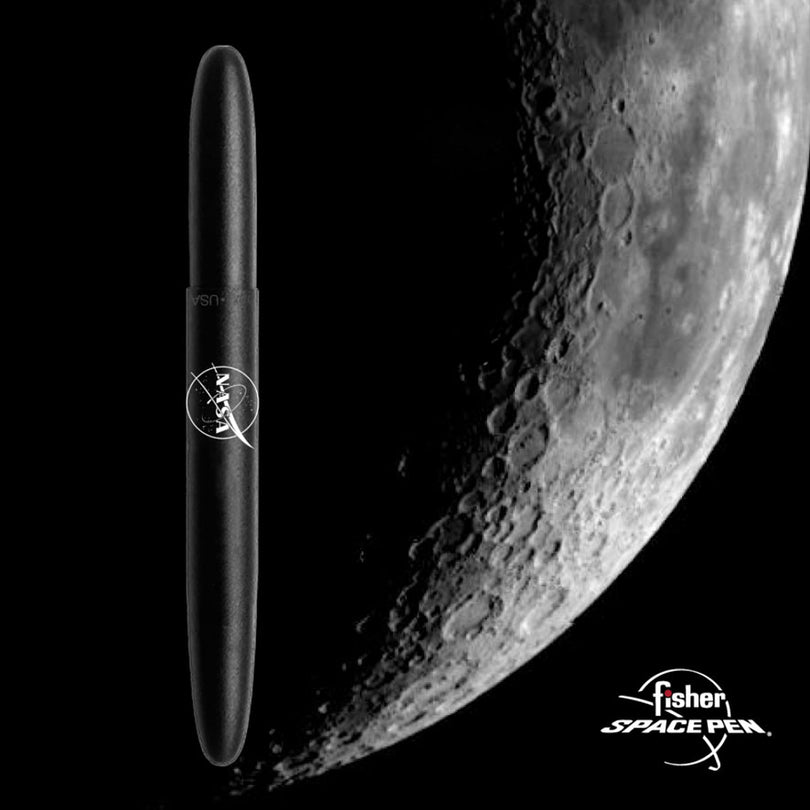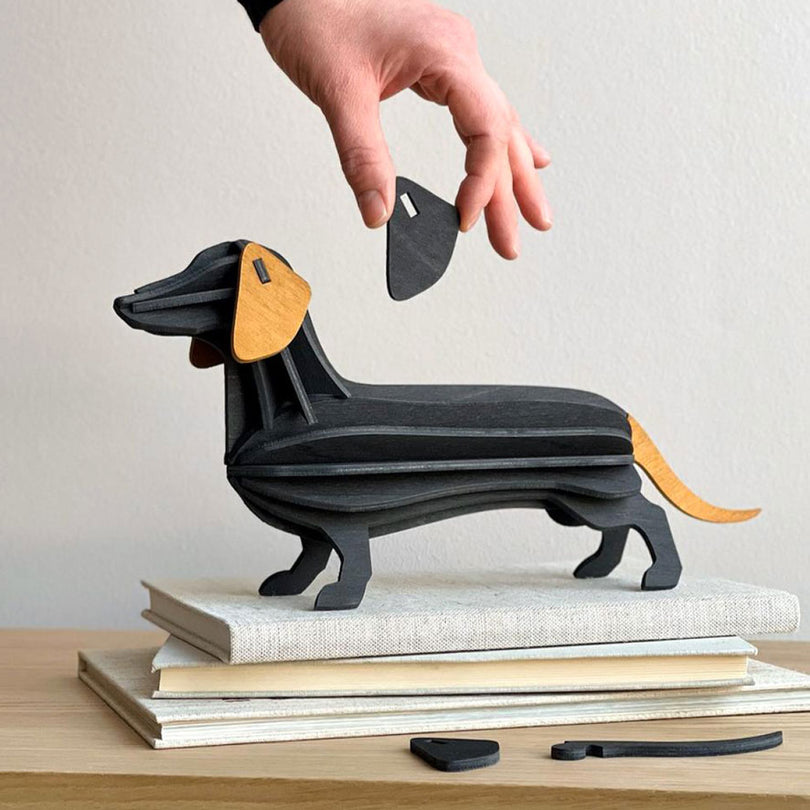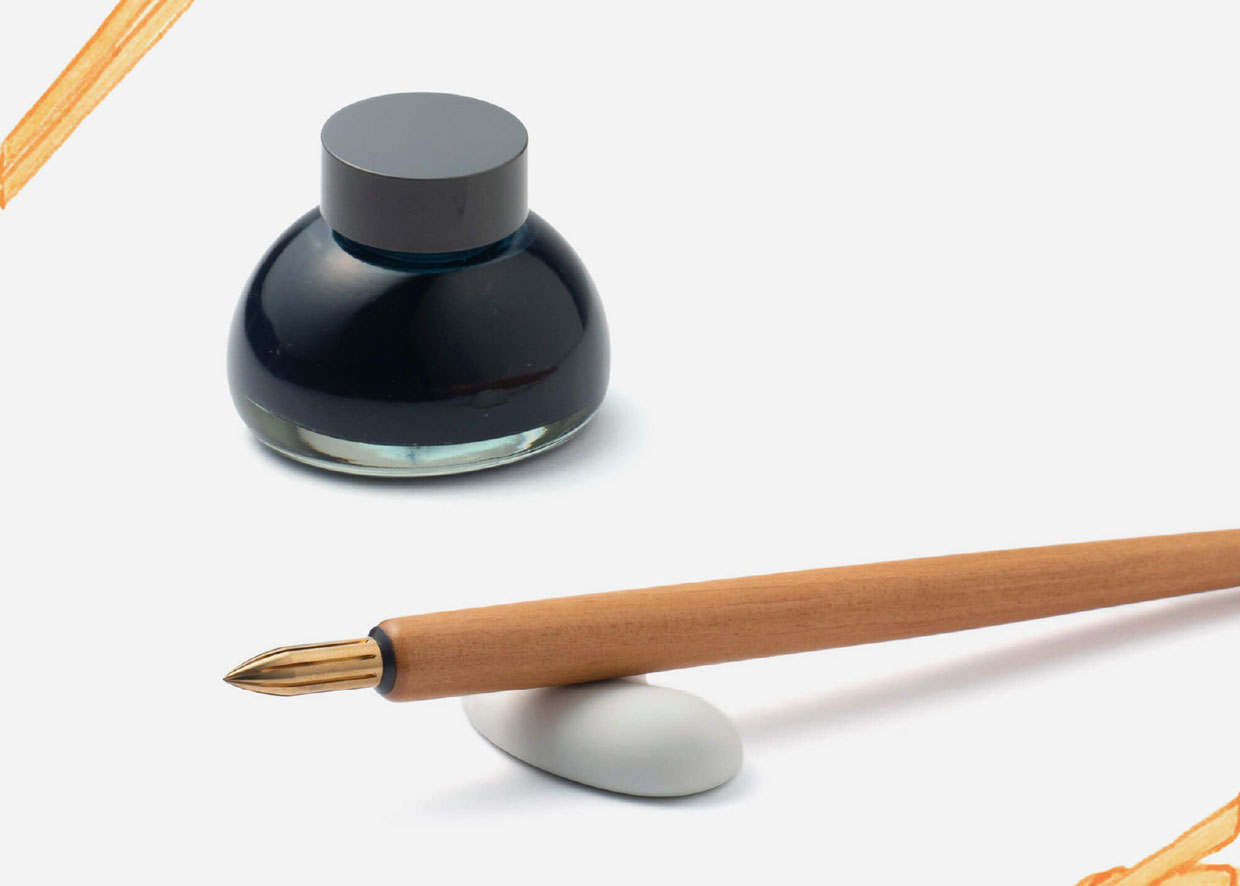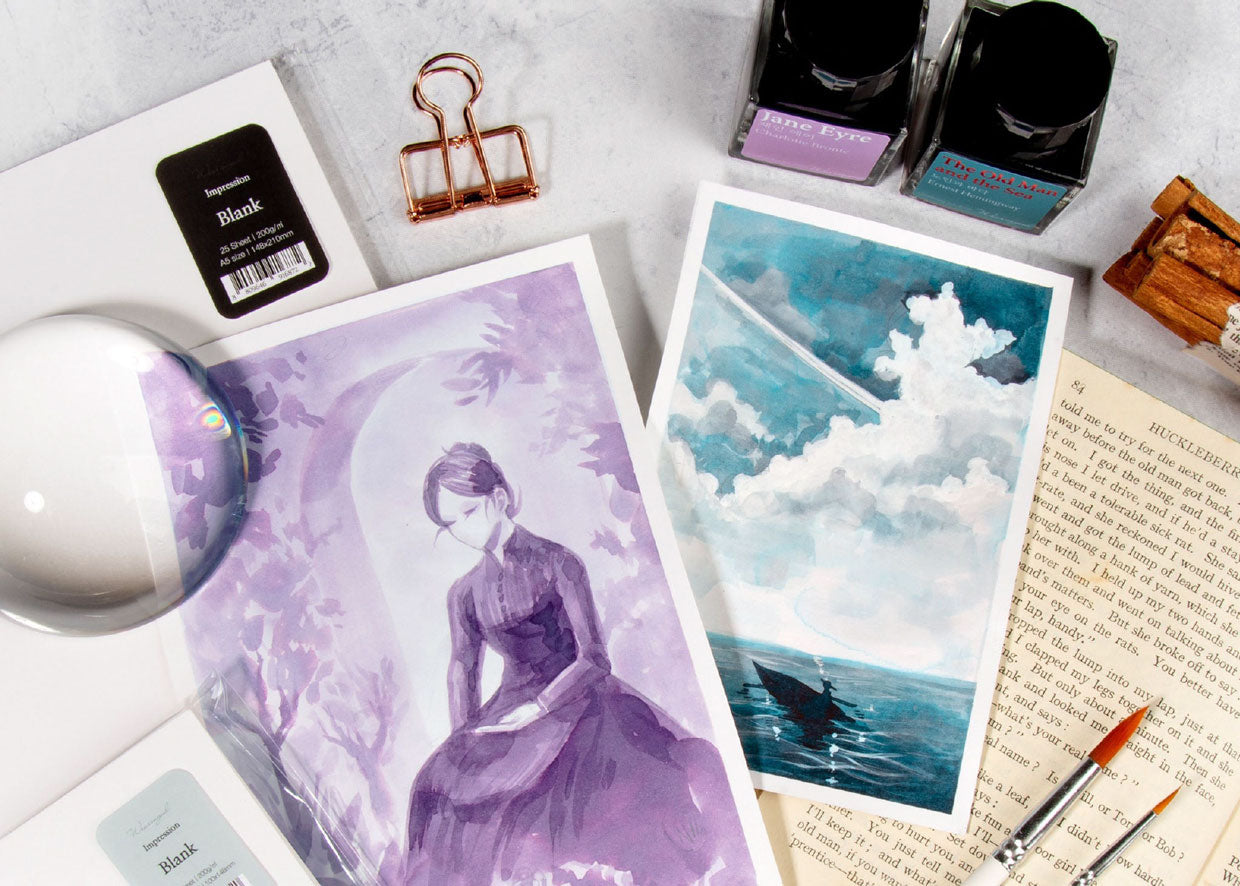If you've ever admired beautifully handwritten invitations or artfully crafted quotes, you’ve likely considered diving into this exquisite art form. In this guide, we’ll explore the different types of calligraphy tools, how they’ve evolved over time, the latest product trends, and tips for caring for your beloved instruments. So, cosy up with cup of tea or coffee, and let’s get started on your calligraphy adventure!
The Evolution of Calligraphy Tools
Calligraphy, from the Greek kalligraphía meaning “beautiful writing,” is the art of turning letters into intricate visual designs and fonts. It has ancient roots dating back to early civilisations like China and Egypt, where it was developed as both a functional and decorative form of communication. In China, it emerged over 2,000 years ago as an esteemed form of artistic expression using brush and ink. Similarly, in the Islamic world, calligraphy flourished with Arabic scripts, adorning mosques and manuscripts. In Europe, the Middle Ages saw the rise of illuminated manuscripts, while in Japan, Shodo - traditional brush calligraphy - became a revered cultural practice. Across cultures, calligraphy continues to symbolise craftsmanship, creativity, and cultural heritage.
Calligraphy is traditionally created with a pen or brush, but throughout history, master calligraphers have experimented with a range of most unusual tools—including bones, fruits, and vegetables. Some would dip their fingers directly into ink, seeking a deeper connection with the art. The evolution of the art is closely tied to the innovation of these tools, as artists constantly pushed the boundaries of their craft.
Fast forward to today, and we have a delightful array of tools at our fingertips. Industrial mass production offers budget-friendly options such as Sailor and Brause, yet it also highlights the allure of carefully hand-crafted tools like Kakimori and Bortoletti. The introduction of new materials like stainless steel, titanium, and iridium has significantly enhanced their durability and ease of maintenance, making them even more appealing. This evolution has made calligraphy more accessible and exciting, encouraging artists of all skill levels to take a hand in this comforting, meditative practice.

Essential Calligraphy Tools
With the right tools, you can easily take part in this fun and modern calligraphy revival. To embark on your calligraphy journey, it’s crucial to understand the different tools available. Each tool serves a specific purpose and can dramatically impact your writing experience. Let’s break down the essentials:
- Dip Pens: The heart and soul of calligraphy! Choosing the right calligraphy pen is like slipping into a pair of shoes that fit just right - comfortable, effortless, and ready to take you anywhere. While it's important to choose a well-crafted, quality pen, the aesthetics matter as well. Traditional options like wooden pens bring a classic charm, while now trendy Murano glass pens can add a sense of whimsy to your art practice. For a different, bold effect, you can opt for brush pens and even brushes. Experiment with various tools and styles to find what feels best in your hand - trust us, it’s worth it!
- Nib Holders: They allow you to switch between different nib sizes and styles with ease. At Bookbinders Design, we offer a selection of nib holders designed for comfort and control. In form, they are either straight or oblique, the latter ones allowing writers to achieve otherwise difficult angles. Straight pens can be slim or wide in the grip area, sometimes with a rubber, for better grasp and comfort. These are better suited for beginners. Plastic holders are cheaper and easier to clean, while wooden ones are stain-prone, but give a more natural, traditional feel. Metal nib holders provide sometimes needed weight. Different sizes accommodate different nibs, so be sure to check for nib compatibility.
- Nibs: When it comes to nibs, you can choose from fine points for intricate details to broader tips for more expressive, sweeping strokes. Generally, there are three shapes - pointed, broad, and round nibs, although variations can be found. Similar to fountain pen nibs, they range from extra-fine to broad. Just as well, there are firm and flexible nibs, where more flexibility allows for more variation in line width. You will experience wear on all flexible nibs, as the pressure applied when writing slowly drives the tines apart - this is normal. Each nib has its personality, so don’t hesitate to mix and match!
An honourable mention – glass nibs! Our collection includes Bortoletti’s unique glass calligraphy nibs from Venice. Perfectly compatible with Italic Italic, Mono-line Italic, and American Italic styles, these hand-crafted nibs come in a variety of colours and are not only beautiful to behold, but provide a unique writing experience, being suitable for both right and left-handed writers. - Inks: Ah, the colourful magic that brings your letters to life! The right calligraphy ink can make or break your calligraphy experience. Beginners might want to start with water-based ink, which flows smoothly, dries quickly, and is easier to clean. As you gain confidence, you can explore pigmented inks that offer vibrant saturation and are lightfast, as well as shimmery and glittery, colour-shifting inks. Each ink type has its quirks, so feel free to experiment with different colours and formulations until you find your favourites.
- Paper: Don’t underestimate the importance of paper! The right paper prevents ink from feathering or bleeding. Look for smooth, dense, high-quality papers specifically designed for calligraphy. Remember—weight isn’t paramount, but smoothness is, especially when using a pen. Before you take on a project, be sure to practice plenty. You can find beginner-friendly calligraphy workbooks here. And to help with writing on the paper, the Kyoei Orions calligraphy writing mat features accurate grids, making centering and positioning letters a breeze, while enhancing your overall calligraphy experience.
New Tools on the Market
As the calligraphy scene continues to grow, the market is buzzing with innovative tools. At Bookbinders Design, we pride ourselves on staying up-to-date with the latest offerings. You can discover trendy calligraphy kits that bundle all the essentials for beginners or stylish ink sets with unique colours that spark your creativity. Exploring these new tools can inspire you to try techniques you’ve never imagined!
Our favourite innovations of late are redefining the calligraphy world, offering exciting options for artists of all levels. The Tachikawa T-40 nib holder, crafted from natural wood and featuring a protective cap, combines sleek design with functionality, ensuring smooth strokes and nib longevity. KWZ calligraphy ink impresses with its stable formula, eliminating the need for constant mixing, thanks to meticulous collaboration with Polish calligraphers. The Parallel Pen’s unique two-plate nib design enables versatile strokes and creative colour blending, perfect for exploring gradients. Meanwhile, the Sailor Hocoro dip pen bridges the gap between traditional dip pens and fountain pens, offering interchangeable nibs and the freedom to mix inks, all within a portable, durable design. Finally, TAG’s Kasane calligraphy ink brings a subtle yet striking palette that combines purple dye, blue pigment, and gold glitter. These tools merge tradition with modern innovation, inspiring calligraphers everywhere.

Influence on User Experience and Craft
The tools you use make a big difference in your calligraphy experience. High-quality instruments make your writing feel effortless, allowing for a smoother flow and better control. When you invest in the right tools, you’re setting yourself up for success—and let’s be honest, there’s something incredibly satisfying about using beautiful instruments.
Moreover, the variety of tools available encourages you to experiment and discover your unique style. Calligraphy isn’t just about perfecting letters and fonts; it’s about expressing your creativity and finding joy in the process.
How to care for your calligraphy tools?
Just like any good relationship, your calligraphy tools require care and attention to maintain peak performance for years to come. Here are some easy tips for keeping your instruments in tip-top shape:
- Cleaning Nibs and Pens: After each writing session, give your nibs and pens a little spa treatment! Rinse them under running water and use a soft cloth to wipe away excess ink. For stubborn residue, use specialised cleaning solutions. Your nibs will thank you!
- Storing Tools: Keep your tools cosy in a cool, dry place to prevent damage. Consider using protective cases or holders to keep everything organised and secure. Your calligraphy arsenal deserves a tidy home!
- Caring for Inks: Keep those colourful potions sealed tight when not in use to prevent them from drying out. Store them upright to avoid spills, and shake well before you dive back in.
Calligraphy at Bookbinders Design
Whether you’re starting with a classic pen or diving into the world of newest innovations, remember that the tools you choose will shape your journey and artistic growth. We’re here to support your creative endeavours with our thoughtfully curated collection of calligraphy tools. Most importantly, let your creativity flow and enjoy every moment of your calligraphy adventure! Happy writing!
Questions? We’d love to hear from you, so don’t be shy! Contact us on Facebook, Instagram or via email at info@bookbindersdesign.com.au


